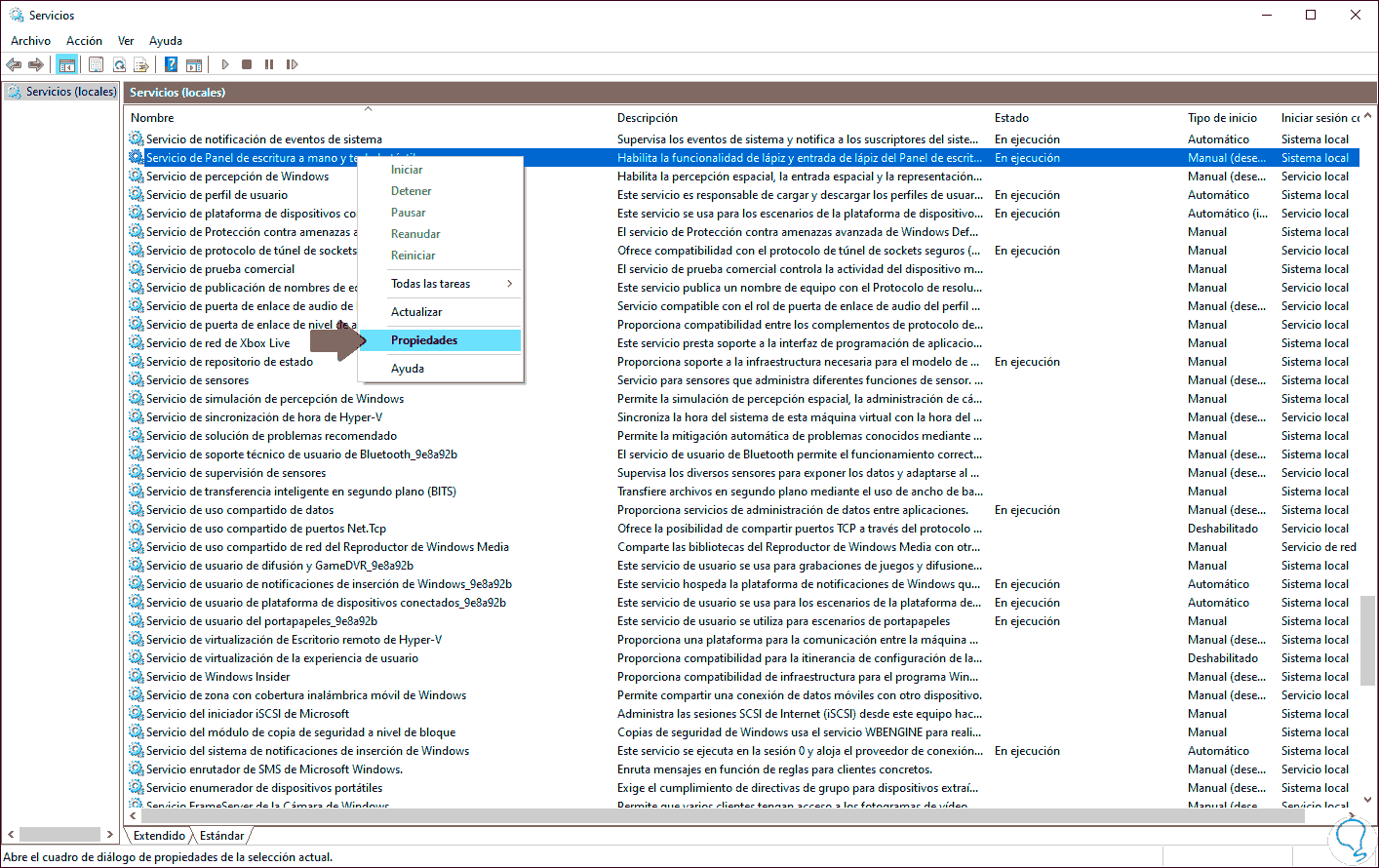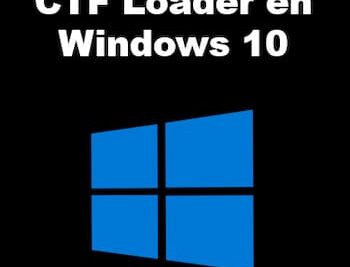- ctfmon.exe is a legitimate process of Windows which manages alternative text input and the language bar.
- can be used by malware if it is located outside the System32 folder, so it is essential to check its location and size.
- The process can be disabled if its functions are not needed, and it is important to differentiate it from malicious variants such as ctfmon32.exe.
Have you ever encountered the process on your computer? ctfmon.exe and have you wondered what it is for or if it could be a virus? The appearance of strange names in the Task Manager Windows can raise suspicions, especially when we don't know exactly what function they perform. Many users encounter ctfmon.exe in the background and they start looking for answers: Is it safe? Can I remove it? What does it actually do to my system?
In this article, we'll clear up all those doubts. We'll take an in-depth look at what ctfmon.exe is, why it's important (or not) for Windows, what potential malware risks it poses, and what you can do if you suspect it's operating on your PC. We'll also tell you how to identify whether your ctfmon.exe file is legitimate or a disguised threat, and what other users think about this process. Get ready to discover everything you need to know, with simple explanations and practical tips to protect your computer.
What is ctfmon.exe in Windows?
The file ctfmon.exe is a genuine component of the operating system Microsoft Windows. Its name corresponds to the acronym of Collaborative Translation Framework Monitor, although it is often found as "CTF Loader". It is a executable program whose main purpose is to manage alternative input services, such as speech recognition, handwriting, or the Windows language bar. That is, ctfmon.exe Monitors active windows and provides services related to text input.
This process is usually activated when using Microsoft Office XP, Office 2003 or later versions, remaining in the background even after closing Office applications. Its presence has been most noticeable in Windows XP and similar versions, although it may still appear on current computers, especially if special input options are used.
What is ctfmon.exe used for?
The main function of ctfmon.exe es control and enable alternative input options beyond the standard keyboard. This includes:
- Speech recognition: Allows you to dictate text instead of typing it manually.
- Handwriting recognition: Makes it easier for Windows to interpret what you write with a digital pen or on a touch screen.
- Managing the language bar: Makes it possible to use different input languages and alternative keyboards.
- User Input Processing (TIP): Coordinates different technologies for entering text or commands.
On devices or configurations where multiple languages or advanced input methods are used, ctfmon.exe is essential for everything to work properlyHowever, on computers that only use one language and the standard keyboard, its usefulness is less and it can be disabled without problems.
Typical file locations and sizes
The legitimate file ctfmon.exe should always be found in the folder C: \ Windows \ System32 or sometimes in other system subfolders associated with Office updates. most common file sizes In different versions of Windows they usually vary, for example:
- Windows 10 / 11 / 7: 15,360 bytes (the most common variant), 9,728 bytes, among other possible variants.
- If the file is in another location, such as "C:\Program Files", "C:\Users\USERNAME" or even in the root of C:, the probability that it is Camouflaged malware increases considerably.
Recommended verify the exact route Right-click on the Task Manager and select "Open file location." If the file isn't in System32, you should be extremely cautious.
Is ctfmon.exe a safe file or a virus?
El ctfmon.exe The original version is completely safe and necessary in some contexts. However, cybercriminals know that many users are hesitant to delete Windows processes, and so some Malicious programs disguise themselves as ctfmon.exe to go unnoticed and avoid detection. That is, if you see this file outside its normal location or with unusual sizes, you should be suspicious.
The viruses and trojans Viruses named ctfmon.exe can hide in unusual paths, such as user folders, "Program Files," "Common Files," or temporary directories. Some examples detected by antivirus software include:
- UDS: DangerousObject.Multi.Generic
- not-a-virus:RemoteAdmin.Win32.NetSup.r
- HackTool:Win32/RemoteAdmin!MTB
- Trojan: Win32 / Ymacco.AA99
If you have the slightest doubt about the origin of this process, the ideal thing is scan the system with a good antivirus and verify the file location. Legitimate files usually have digital signatures from Microsoft o VeriSign and do not generate alerts in most security scans.
How to detect if your ctfmon.exe is dangerous
The key to knowing if you are facing a virus or a safe process is in check its location, size and behaviorWe offer several guidelines to help you identify potential threats:
- Location in System32: If you are in C: \ Windows \ System32, the risk is minimal (approx. 3%).
- In "Program Files" or user subfolders: The risk increases dramatically, reaching over 50-60% in some cases.
- In the root of C: or in "My Documents": The risk can rise to 90%.
Other warning signs include:
- Multiple instances of ctfmon.exe running simultaneously.
- Can't see the ctfmon.exe icon in the system tray when it should be active.
- A very different file size than usual.
- The process returns after ending it with the task manager, or consumes resources in an unusual way.
If you suspect, use programs like Security Task Manager or perform an analysis with Malwarebytes Anti-Malware for greater security.
Can ctfmon.exe be removed?
In most cases, ctfmon.exe can be closed without affecting the system, as long as you don't use speech recognition, handwriting recognition, or multiple languages. You can disable it through the Text and Language Services settings in the Control Panel, or by removing alternate input options from Office and other associated programs.
However, It is not recommended to delete the file manually, since if it's the original, it's part of the system. However, if you detect it in an unusual path or it exhibits suspicious behavior, it's a good idea to scan your computer and remove it with specialized software.
Common confusions: ctfmon.exe vs ctfmon32.exe
There is another variant, ctfmon32.exe, that is not part of Windows and is usually associated with malware, spyware, or unwanted programs such as CoolWebSearch, Raidys, or Family Key Logger. The main purpose of these files is to execute threats or malicious program components. Under no circumstances should they be run, and they must be removed if detected.
User reviews and real experiences
User reviews and opinions reflect some confusion about this file. Some detect multiple instances of ctfmon.exe At startup, others notice that anti-spyware programs flag it as suspicious (even though it's signed by Microsoft), and many have found it while investigating security issues. It's common to be concerned about its persistent presence even after closing Office applications. Most experts agree: as long as it's in the right path and its size is as expected, there's nothing to worry about.
Still, it's good practice. periodically review active processes, check essential file locations, and have an updated antivirus. Keeping your system clean and installing only trusted software helps minimize risks.
What to do if ctfmon.exe is causing problems?
If you notice excessive resource usage, strange behavior, or security issues and suspect this file, follow these steps:
- Scan the system with a robust antivirus like Malwarebytes, Windows Defender updated or any reliable solution.
- Check the file location from the Task Manager. If it's outside of System32, consider removing it after making sure it's malicious.
- Check autostart entries (msconfig) and remove anything you don't recognize or need.
- Clean the system regularly using tools like cleanmgr and sfc /scannow to repair essential files.
- Make backup copies periodically, and if you have serious problems, consider repairing your Windows installation instead of reinstalling the entire system.
Remember that a clean environment and preventive maintenance are the best defense against threats related to system processes that can hide malware.
Useful tools for analyzing ctfmon.exe
If you want to dig deeper into the active processes on your PC or confirm whether ctfmon.exe is safe, there are programs like Security Task Manager that show all running tasks, including hidden or malicious processes, and provide a security risk rating. In addition, This article about what ctfmon.exe is It is useful to understand how to identify safe or dangerous files.
Additionally, keeping your system and programs up-to-date helps prevent vulnerabilities. Files digitally signed by Microsoft are, in almost all cases, legitimate and safe.
Know well What is ctfmon.exe and how does it work? It's essential to understand the inner workings of Windows and know how to differentiate between essential processes and real threats. Taking preventative measures, being alert to irregularities, and not panicking when faced with unfamiliar names is the best way to keep your PC safe, clean, and running smoothly.
Passionate writer about the world of bytes and technology in general. I love sharing my knowledge through writing, and that's what I'll do on this blog, show you all the most interesting things about gadgets, software, hardware, tech trends, and more. My goal is to help you navigate the digital world in a simple and entertaining way.



